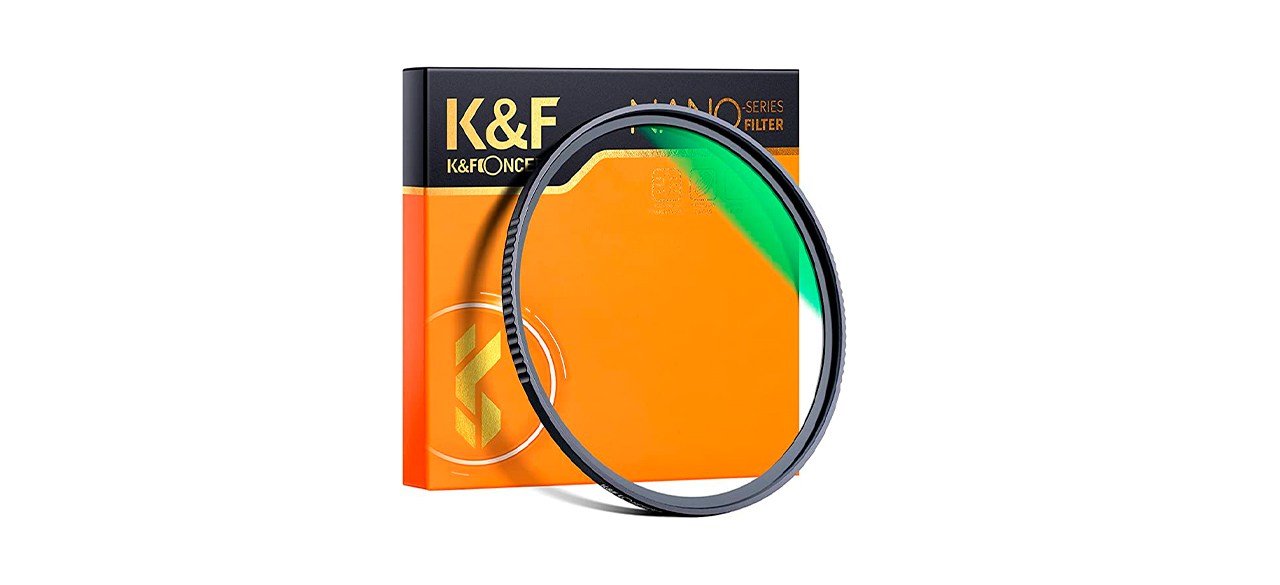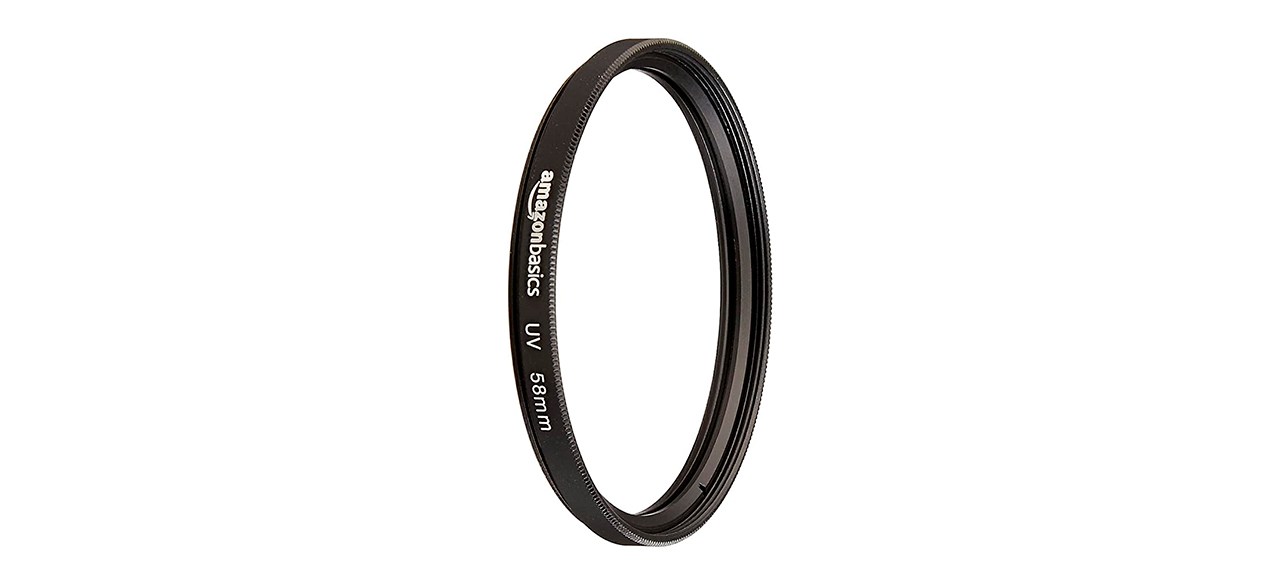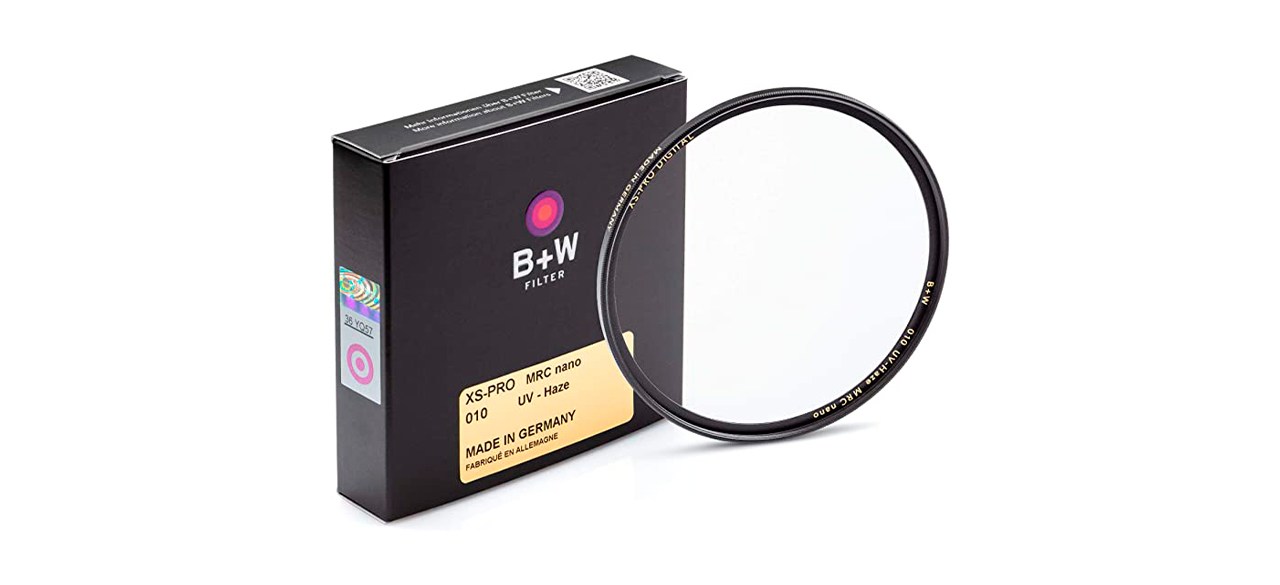Which UV protection lens filter is best?
Digital cameras are usually expensive, and you should do everything you can to protect them. But some people think that only refers to protecting the camera’s body from water and dust while keeping lenses clean. You need to do those things, but there’s another unseen element that can damage your equipment.
Film and digital cameras are susceptible to the sun’s ultraviolet light. Of course, that isn’t a good thing, and a UV protection lens filter is one of the best ways to minimize the impact. These come in various sizes and protection levels, but the K&F Concept 77 Millimeter UV Protection Filter is an excellent choice.
What to know before you buy a UV protection lens filter
Why you might want to use a UV filter
Being careful with your photographic equipment and keeping it in a sturdy camera bag is a good way to ensure it lasts for a long time. But unlike the camera body, the internal components can be damaged by UV rays.
The filter, which fits over the front of the lens, blocks out a great deal of these rays so that they don’t pass through the lens into the camera. Old-style film cameras are more easily affected, as the rays cause discoloration on film. But there’s another reason why a filter is a good idea: scratches. Having an additional glass piece in front of the lens prevents scratches and keeps the dirt and dust out.
Diameter of the lens
Similar to a smartphone screen protector, UV ray blockers for a lens are made to fit specific diameters and designs. You can’t simply attach a lens filter onto any lens and expect it to stay there. The most important aspect is the lens thread and the protector’s diameter, which must be compatible.
Your camera’s lens thread size will be marked somewhere on the lens barrel or printed underneath your lens cap, often indicated by the diameter symbol (an oval with a vertical line through it). For example, if you see ⌀=37, that means the thread diameter is 37 millimeters.
Can reduce image quality
As with most technology, the better your equipment, the better your results will be. The same goes for anything you attach directly to a camera lens. There are several affordable UV filters, but you might notice a slight reduction in image quality or inaccurate color reproduction.
However, high-quality filters use premium glass covered with several protective nano-layers. The number of layers can vary between 16 and 28 and usually consist of hydrophobic, anti-reflective and scratch-resistant layers.
What to look for in a quality UV protection lens filter
No distortion or vignetting
When you place something in front of a lens, it tends to change the resulting image. This is true in most cases with low-quality filters. However, premium glass and expertly crafted metal rings greatly reduce the possibility of distorting photos. High-quality filter fittings ensure that the UV protection always attaches level to the lens.
Vignetting can also occur with lesser-quality filters, where the image edges get a dark shadow. This affects how light enters the filter and falls on the camera’s sensor.
Exceptional glass quality
The UV filter lens matters for the best-quality photos. You can have a sturdy, uniform metal ring to attach to it, but if the glass isn’t high-quality, you can experience distortion or discoloration. The higher the filter-glass quality, the less the discoloration is noticeable. Optical glass is the best but the most expensive; Schott B270 glass is an excellent (and more affordable) alternative.
A trick to working with a UV filter is knowing how and when to adjust the camera settings to compensate for inaccurate colors.
Multi-coatings on both sides of the lens
The number of protective coatings on a UV filter lens largely coincides with its quality, so ensure that it has multiple coatings on both sides of the glass. More coating will increase the price, but it’s much better for light transmission, accurate colors and prevents double image reflections.
How much you can expect to spend on a UV protection lens filter
The price depends on the technology used, the diameter and the manufacturing company. Affordable filters with only a few layers cost $5-$10, but premium filters made with Japanese glass and multiple filters cost $40-$80.
UV protection lens filter FAQ
Can you still use your lens cap with a UV filter attached?
A. Yes, and it’s highly preferred that you do. The lens cap performs a vital function in keeping the business end of the lens clean from dust or fingerprints. Even if there is a UV lens filter on, it fits as long as the cap is the same diameter.
How do you clean the UV filter?
A. Clean it the same way you do a regular camera lens. Special kits contain a small brush, a microfiber cloth and a cleaning solution to remove dust or fingerprints.
What’s the best UV protection lens filter to buy?
Top UV protection lens filter
K&F Concept 77 Millimeter MC UV Protection Filter with 28 Multi-Layer Coatings
What you need to know: This UV filter is made from durable Japanese AGC glass that won’t distort or discolor your photos.
What you’ll love: It has 28 layers, including water- and scratch-resistant coatings. The filter has a 99.6% light transmission to reduce reflections, and the frame is slightly over a tenth of an inch thick to reduce vignetting.
What you should consider: The price puts it out of range for many amateur photographers.
Where to buy: Sold by Amazon
Top UV protection lens filter for the money
Amazon Basics UV Protection Camera Lens Filter
What you need to know: This affordable UV filter is perfect for beginner photographers.
What you’ll love: It comes in five sizes, and you can buy it as a single filter or in a pack of four. It effectively protects the lens from dirt and dust, and reduces the occurrence of blue tints in photos.
What you should consider: It’s only coated on one side, making it problematic in bright environments.
Where to buy: Sold by Amazon
Worth checking out
B + W 58 Millimeter UV Protection Filter
What you need to know: This filter has 16 multi-resistant nanocoatings to protect the lens and camera sensor from harmful elements.
What you’ll love: It protects your lens from accidental drops and dust, fingerprints, scratches or sand and seawater spray. It has a 99% light transmission to prevent ghosting or light flares. The XS-Pro mount fits most DSLR lenses and eliminates vignetting by fitting accurately every time.
What you should consider: Some users said that while a lens cap fits on the filter, it is prone to falling off if you aren’t careful.
Where to buy: Sold by Amazon
Want to shop the best products at the best prices? Check out Daily Deals from BestReviews.
Sign up here to receive the BestReviews weekly newsletter for useful advice on new products and noteworthy deals.
Charlie Fripp writes for BestReviews. BestReviews has helped millions of consumers simplify their purchasing decisions, saving them time and money.
Copyright 2023 BestReviews, a Nexstar company. All rights reserved.




